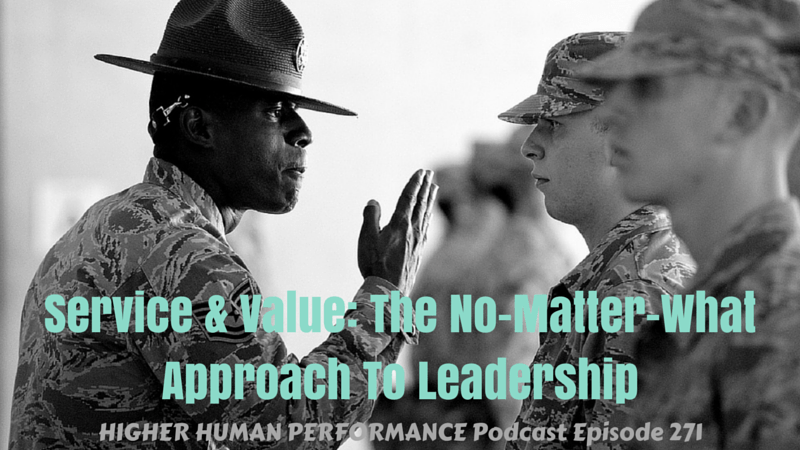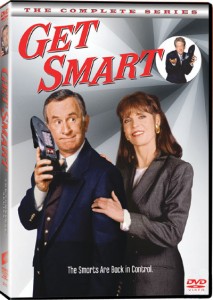272 The Art Of Being Unique (Leaders Determine Culture)
Podcast: Play in new window | Download (Duration: 1:15:29 — 69.3MB)
Subscribe: Apple Podcasts | Spotify | Email | RSS | More

unique – defined –adjective
1. Existing as the only one or as the sole example; single; solitary in type or characteristics
2. Having no like or equal; unparalleled; incomparable
3. Limited in occurrence to a given class, situation, or area
4. Limited to a single outcome or result; without alternative possibilities
5. Not typical; unusual
Seth Godin calls it a purple cow. Drive past any pasture full of cows. You don’t notice them. But, if one cow were purple – completely different and totally unique from all the others – you wouldn’t be able to ignore it.
Jeffrey Gitomer displays it in his “little (red/black/green/yellow) book” series.
Harley-Davidson motorcycles have a patented sound, which makes them different from any other cycle.
Apple was born to be unique – different. Since 1997 their advertising slogan has been, “Think Different.”
Moleskine notebooks are unlike any notebook on the planet. A rich history and a great story (Van Gogh, Picasso and Hemingway are supposed to have used the original versions) set Moleskine apart.
Think of the unique things or companies that are part of your life – the purple cows. Godin, Gitomer, Apple, Moleskine are but a few that are part of mine.
People talk of performance, quality and other business elements that are worthy of any business discussion. But in the end, it’s uniqueness that makes the big difference.
Uniqueness certainly has an element of performance, quality and other positive attributes – but it may not.
The Floridian is a Ft. Lauderdale diner. It’s an institution. They are open 24/7. They never close – even in hurricane season. They’re known for enormous breakfast plates and a wait staff is surly. “What’doya want?” They’ll get your order right. They’re prompt in their service. They’re attentive. They’re just not warm and fuzzy. They act like they’ve got places to be, and people see. So they waste not time and don’t tolerate you wasting it either. When they ask what you want, you’d best be ready to tell them. Otherwise, they’ll quickly tell you that they’ll be back when you’ve figured it out. It’s their reputation. It’s part of their purple cow. That tactic wouldn’t likely work for us – or many other service companies. But it works for them.
Years ago in Ft. Worth there was an ice cream company named O’Leary’s. Rude service was their shtick. In fact, there was one dish of ice cream that you could order and the entire staff would approach the person who ordered it – as their dish sat in front of them – and about 6 people, armed with whip cream cans, would spray the person, their dish and anybody seated nearby. It was great fun if you were a safe distance away. It was part of their purple cow. People would take visitors there and urge them to order this, and other dishes, that were certain to be embarrassing. Good-natured fun, nothing mean spirited. Order desert from your favorite restaurant and have them do the same thing. The employee would be fired and you’d never go back – but people used to line up to get into O’Leary’s.
Ritz-Carlton wouldn’t be caught dead behaving that way. They have a completely different purple cow. Things are perfect at every Ritz. Neatness, cleanliness and prompt/courteous service are everywhere you look – and even in places where you don’t look. Nothing goes wrong. Ever. And if it should, trust me – the recovery will be second to none. We all understand the phrase, “Putting on the Ritz.”
There are countless ways to find or make oneself unique. Every person, and every company has to discover their own uniqueness and make the most of it. Those who never focus on uniqueness are doomed to be a part of the masses – lost in the crowd, never distinguishable from the herd. It’s bad for business. It’s bad for careers.
Gitomer wears work shirts that say, “Jeffrey” above one front pocket and “Sales Maintenance Department” above the other.
Jeffrey uses humor to his advantage. It’s part of his personality and he works it to his full advantage. Tom Peters could never pull it off. Tom is a button downed Stanford MBA from Vermont who dresses like a New Englander and his purple cow is more guru-oriented than Jeffrey’s.
Well, you certainly get the idea of uniqueness by now. Whether we call it an angle, shtick or approach – a person, or a company’s ability to set themselves apart is THE thing that defines them.
People and companies need to find their uniqueness or they’ll be lost in the herd. Nobody will notice them. Nobody will see any different about them. They’ll go through life unnoticed.
When a person or company fails to be true to the uniqueness that has been successful for them in the past, then they begin to lose their identity. It happens.
In 1948, long before Wal-Mart was even a dream, a couple of clever merchants began the discount retail phenomenon with a store called, Korvettes. Located in New York, New Jersey and Philly it was wildly successful. It was uniquely different. It was like a big department store, but without the high prices. Korvettes constantly promoted. Price and selection.
Korvettes grew. They grew some more. Eventually, they decided they wanted to upscale. They lost their way. They were Wal-Mart before there was a Wal-Mart. Nobody thought they could fail – including those who ran the company. But they were wrong. They lost their uniqueness. Being the price leader is tough row to hoe. The retail landscape is littered with the carcasses of those lost their uniqueness.
Where is your leverage? What are the points of your organization’s uniqueness? What makes your organization special?
What’s the difference between Sleep Experts, Mattress Firm, Mattress Giant and Mattress Pro? What’s the difference between Rooms To Go and The Room Store? What about Nebraska Furniture Mart (they just came to DFW last month)?
The Birthplace of Uniqueness
It doesn’t matter if we’re talking about Jeffrey Gitomer or The Floridian restaurant. Uniqueness begins with a philosophy, an approach and purposeful intentions. I could argue it also ends there.
Seth Godin sold his technology company back in the day and made out good. Wanting to establish himself as a guru he shaved his head because he thought it would make him stand out. He set out to create his purple cow. It worked. It was first visible in his mind. He had a plan. He created an approach. He had intentions. He was a guru long before anybody knew him, and long before he had ever written a book, or conducted a speech.
While it’s possible for people, or companies, to stumble onto or into uniqueness – it’s much more likely that it’s architected. And it’s much more profitable to take calculated efforts toward accomplishment than to hope you’ll win the lottery.
Philosophy
I don’t mean anything high minded. I simply mean core beliefs. Every company has them, whether they’re stated or not. Go to work for any company and within 3 days you’ll know their core beliefs. Even if nobody states them, you’ll see them.
What would you say are your core beliefs?
An Approach
The philosophy is what drives the approach. The approach is the behavior. It’s where the philosophy is engaged. It’s what people do to bring the philosophy to life.
What would you say is your approach?
Purposeful Intentions
What would you say is your purposeful intention? What is it you intend to accomplishment by your philosophy and your approach? It’s the outcome you’re chasing.
Your Greatest Need
Michael Gerber, author of The E-Myth, was among the first to crystallize the idea that people can become so busy working at their trade or craft – plumbers plumbing, painters painting, doctors treating patients and so on – that they don’t take the time to work on running their businesses better. He pointed out how people need to spend more time working ON their business, rather than just working IN their business.
That’s precisely what all this is about. We have to devote more time to working on our business or organization. We all certainly spend an enormous amount of time working in our companies. We’re all busy working at the tasks at hand, doing whatever it is we do. But we’ve got to put more effort into building the organization and culture necessary to perform well – uniquely well. Being remarkable isn’t easy, but it’s thrilling and people want to be part of it.
Our challenge is finding time – making time – to work toward improving our organization! That’s our greatest need.
It requires dedication and commitment. It demands we carve out some time – daily – to give sober thought to ways we can make ourselves better.
What do you intend to accomplish? How do you intend to get it done?
It’s purposeful intentions. These two questions sum it up.
Hopefully, you’ll spend a little bit of time writing down what you think your approach should be – your thoughts about your company’s philosophy and intentions. Don’t cheat yourself and your organization by just focusing on the actual work product – the stuff you’re busy doing every day. If your leading an organization to focus only on the “to-do-list” and you don’t spend time talking about why and how — then you’re not building an organization. The job of leaders – especially those in the c-level suite – is to build an effective, engaged high performance organization. It’s not to merely manage tasks, or work product.
What’s your purposeful intention?
More clearly asked, “What do we intend to accomplish?” Are we here to create revenues, profits, customers, happy employees, and happy suppliers? Are we here to find cures for the illnesses of the world? Why are we here? What’s our daily purpose? Why do we get out of bed to come to work? Hint: this isn’t the actual work (plumbing, painting, treating patients, etc.) — it’s the reason behind the actual work.
It must be something greater than, “I get out of bed to earn a paycheck.” Passion (strong enthusiasm) requires more than that. And if our passion is completely lost, then we’ve unearthed a problem. Everybody suffers the occasional lack of passion. It happens. Leaders can’t afford to lose their passion.
Some years ago I architected a mandate of sorts to evangelize throughout the retailing company I was running at the time.
To become a sleek, highly maneuverable, viciously competitive retail company
Let’s define some terms, as I meant them then, and as I would still define them today.
“To become” means it’s a constant work in progress – no matter how good we become, we can always become better; the quest never ends.
“Sleek” means quick, fast and efficient. It denotes a group of people capable of focusing on efficiencies and effectiveness.
“Highly maneuverable” means agile, athletic and able to go in a different direction quickly. It’s that “turn on a dime” ability.
“Viciously competitive” means we hate losing. Losing means we fail to capture the business we’re chasing. Losing means we messed up. Losing means we didn’t do our best.
“Vicious” means we can be mean-spirited toward being beaten in the market by others who serve customers better than we do. “Vicious” means we’re intolerant of stupidity and ignorance – mistakes or errors in judgment that are preventable with greater effort, either in know-how or execution. Not in some harsh counterproductive way, but in a way where we don’t dismiss it lightly – a way where we have a greater resolve to fix it so it never happens again. And negligence is always without excuse!
I crafted that company mantra about 20 years ago. Not much has changed in my personal business philosophy. I still feel the same way except back then the company was a luxury retailing company. Today, it’s an executive coaching and consulting company. Maybe in a future show I’ll pull the curtain back and share the process of the current version of my career. Today, part of my uniqueness is my process – which is ridiculously personalized and individual. I’m still fond of the mantra, even though my business today is different. See if you can apply it to your organization.
To become a sleek, highly maneuverable, viciously competitive __________________
I was about 16 when I first hit a sales floor to sell hi-fi gear. I was about 18 when I first became a manager. I was 19 when I began to manage and do purchasing – and was still working a retail sales floor on a daily basis. I was 23 when I began to operate a subsidiary of a larger company.
I grew up in retailing. I’ve seen people deliver superior service, repeatedly — and I’ve seen people who never lifted a finger to do good work, or get better. As I slope toward older age my tolerance for that latter group is growing lower and lower! The reason is simple. They destroy our opportunity. They rob the rest of us of our chance to be everything we hope to become. I resented them when I was 16 — as I vacuumed the floor, cleaned the bathroom and made sure the showroom was show-time ready and they were out back smoking and cutting up.
I resented them when I was 19 as I was busting my hump to earn bonuses by making sure shelves were fully stocked, products were neatly in place on the sales floor and trying to learn the craft of managing business and leading salespeople – only to find that some wouldn’t lift a finger to even put new products out, or properly greet a customer who entered the store.
I resented them when I was 23 and most of us were working to conquer the world, but some didn’t want to contribute to our conquest. Some things never change. My resentment toward losers is one of those things. The apathetic person – Mr. Indifference (or Ms. Indifference) – has always driven me crazy.
Do you have non-negotiable standards? You don’t know what those are? Namely, it’s what your organization requires of employees in order for them to keep their jobs. Those are your non-negotiable standards! You’d better have them if you intend on having a high-flying, hard-charging remarkable company.
But before you get to non-negotiable standards you have to give people their reason for being part of your culture. What’s their purpose? What are the intentions of the company today? And where do your people fit in that plan? All your employees deserve to know the story of where and how they fit. That necessitates a clear understanding of their role and the big picture of where their role impacts the whole.
Employees can’t provide those answers. Employees can’t provide the direction for a company. Leaders are necessary. Leadership provides the direction that is desperately needed by every company! Today’s show is about challenging us, as leaders, to get busy with improving ourselves as leaders. Go back and check out episode 271 – Service & Value: The No-Matter-What Approach To Leadership. If you don’t believe leaders have an obligation to serve the people they lead, then I’m not the voice you’re likely going to listen to anyway. I believe your value is defined by the benefit you provide to the people who comprise your organization. They should be better because of you, not in spite of you.
You Must Make A Positive Difference In The Outcome
In many instances, organizational problems and challenges are the outcome or result of ineffective leadership. That isn’t to say that leadership is always 100% to blame, or that leadership is 100% ineffective. It may be the mere lapse of leadership in a moment. It may be a systemic problem where leadership isn’t paying close enough attention. The bottom line, in every case, is that leaders bear the responsibility. We’re accountable. When things go wrong, we’re responsible. We have to fix it. When things go good, we’re responsible for having put people in positions where they can shine. Good or bad – leaders are accountable.
Harold Geneen was the tough-minded leader of ITT in the 60’s and 70’s. He had a mandate still resonates with me.
“Managers must manage.”
Geneen was a brute. A bully. There’s much about him that I don’t admire. But he certainly understood accountability. I read of him as a teenager while in college and was captivated by a man with such resolve to hold fire to the feet of those who wouldn’t perform. Feeling like I was committed to being a high achiever, I was regularly frustrated by co-workers who were treated identically to those of us busting our butts. I blamed leadership. Now that I know more, I blame leadership even more.
I wanted leadership to hold fire to feet of those smokers who hung around at back while I was busy making sure the floor was performance ready. Every organization needs effective leadership. In spite of Zappo’s new holacracy management style, leadership is always required if high performance is the goal. We’ll see how centralized work groups, leaderlesss work units and other new ideas can be implemented. I’m not a naysayer about those ideas though — because there is still leadership somewhere, if only to implement these new ways of doing the work. Mark it down, somewhere there’s a leader (or group of leaders) driving the culture!
My desire for accountability stems from this one truth –
the initiative of good people (solid performers) is destroyed by the lack of initiative of bad people (poor performers)
Everybody benefits from solid, consistent accountability. The good people are made even better. The bad people are given the chance to become good people or to find new places where they might fit and become good people. Discipline. Responsibility. Wisdom. Those traits can’t exist when leadership can’t or won’t provide it.
So it’s up to us. It’s up to leaders in every organization, at every level.
Dr. Phil is known for saying, “Behave your way to what you want.” I’d only modify that slightly for this discussion about leadership. It’s our job to demand the behavior we want so our organization is able to accomplish what we want, in the way we want, when we want. Yes, it starts with our own behavior (lead by example and all that), but we have to impose our will on the team – for their benefit and the benefit of the organization. Not with brute force, but with persuasion, influence and leading.
If our people don’t perform in the ways necessary for our company to win in the market – it’s our responsibility to fix that.
If we don’t have positions filled as we need, with the best talent possible – it’s our responsibility to fix that.
If we don’t have the consistent performances necessary to make our organization as good as it could be – it’s up to us to fix that.
What Harold Geneen knew and preached was simply the notion of “find a way.” Figure it out. Get busy with it. Do it. Do it now. Without delay.
So, back to the point of our purposeful intentions. As leaders, our first job is to determine what those purposeful intentions are. If we don’t know, how can we pass that on to our team? If we don’t know the point of the sermon, then what are we preaching?
A friend was approached about going to work for a company with a 10-year history. The company was in his field, but they hadn’t been in business nearly as long as the company where he was currently employed. However, it appeared to be a decent opportunity for more money. The CEO, along with the founder of the company, invited him to a breakfast meeting to discuss a potential opportunity.
For 90 minutes they talked. He told them a bit about himself. They told him a bit about their company. When I asked him how the meeting went he reported that it went well.
“What’s their compelling purpose?” I asked him. “What do you mean?” he said.
“Well, what makes them unique? How do they compete? Price? Service? What?” I continued to ask.
Long pause. He didn’t know.
In a couple of phone calls and a 90-minute meeting he had come away without a clue. And this was the CEO and the founder.
I encouraged him to find out a few things. First, who is their target customer (and how do they know where to find them)? Two, what is their compelling offer. Why should anybody do business with them?
A few emails were shot back and forth between him and the CEO. A few phone calls were also made. The CEO delivered the usual bit of rhetoric, but still those questions lingered, unanswered.
He never did find out. If the CEO and founder who interviewed my friend can’t or won’t reveal those things about their company – then who will? And if they can have numerous communications with a prospective employee (somebody they want for an executive position) and not reveal those things, then it makes me wonder…
Do they have purposeful intentions?
Do they have compelling reasons?
It’s entirely possible they don’t. It’s also entirely possible that they do, but they can’t articulate them. In either case I know one thing about them – they’re ineffective leaders! That company needs leadership. Perhaps that was an opportunity for my friend. Perhaps not. He declined to accept the job, in part because of these unanswered questions.
Leaders have to provide those answers. It’s our number one responsibility. It will drive everything else we do. It will determine how effective we are at managing all the functions of our operation and in leading all the people who fulfill those functions.
Simply put, it’s first things first. Our employees must know:
- Why are we here?
- What’s our purpose?
- How are we going to fulfill that purpose?
Once this episode is over you can resume the normal course of your professional life – or – you can elevate your expectations for living more a productive, more invigorated, more successful and more unique life. Not because of what I’ve said, but because you’ve made up your mind that you’re ready to climb up to the next rung in the ladder of your ability to succeed as a effective leader.
Right Here. Right Now.
For as long as I can remember salespeople have heard sales managers ask the tired question, “What have you sold today?” The lesson learned by every salesperson is that what you did yesterday is of no consequence. The life of a salesperson is always best lived in the moment – today.
It’s often difficult for people to live in the moment. We’re creatures of hope. We have hopes that our tomorrows will be better than today. And before you know it, tomorrow is here and it looks an awful lot like yesterday, and the day before. The reason is pretty simple. Hope is not a strategy. We’re doing today what we did yesterday, and the day before.
Everybody has hopes. Everybody has dreams. Everybody wonders what life would be like if they had more money, if they were more physically fit, if they lived in “that neighborhood” or if they could drive “that car.” Hopes and dreams. We’ve all got them. But they’re pretty meaningless really…unless.
Unless, you decide to do something about them. Unless you decide to create a goal – an objective. And with that goal you decide to develop a plan of action – steps you’ll take to advance yourself toward that goal. And you establish some timelines to help you measure the progress you’re making toward the goal.
Ah, there’s the rub. Hope requires no effort. Just sit back, relax and imagine what life could be like if only.
Accomplishments almost always – not always, but almost always – require effort. Luck does happen, but luck is no better strategy than hope.
The pressing question worth asking, and answering is…
What action am I going to take – right here, right now?
Starting. Finishing. Both matter.
We’ve all heard it said that it doesn’t matter how you start, it matters how you finish. Well, that’s not entirely true. If your start was poor, then you’re finish may be poor. And then there’s all that stuff in between the start and finish. All those adjustments that might just make a difference.
I know very little about NASCAR, but I know this much. The team that can make proper adjustments during the race has an increased chance of a top finish. The team that wins the pole position isn’t guaranteed a win. They could sit back and relish the great start they made, but they’ll fail if they don’t make proper adjustments throughout the race.
Our professional (and private) lives are no different. While we desire to have a great start – and we want to plan and do everything in our power to make that happen – the fact remains, sometimes initial plans don’t work out. Sometimes you have to alter your course. Sometimes you need plan B, C or Z.
Top among my biggest professional regrets is the start without a finish. Things would sometimes get started, but I’d quickly learn that within time – usually a very short period of time – that something new would erupt to distract us and take us in another direction.
The Hazards Of The Reading CEO
I’m a reader. Many leaders I know are readers. There’s been a longstanding problem with that. Well, that and leaders who attend seminars. Our mind hop around from one good idea to another, to another. We can fall in love with an idea and be anxious to install it in our organization. Nothing wrong with that EXCEPT it can drive us to hop around, starting things and failing to finish them.
We read a new book. It’s filled with great ideas that we can’t wait to execute. We gather our staff and give the orders. Down the organization trickles our new latest, greatest, trickest idea. Rinse and repeat next month after we’ve read a different book, or attended a new seminar. We wear out our organization. They lament every book we read, every seminar we attend and every new idea we’ve got. They’re tired. Exhausted from so much starting only to be stalled in midstream because we’ve now got a new idea that shoves that old new idea to the background. Lots of motion. Not much action. No progress or growth because we’re all busy implementing a new initiative!
HINT #1: Avoid implementing or even discussing a new idea found in a book or seminar until 30 days have passed. If you’re still antsy to try it after 30 days then you’re likely fired up to see it through.
HINT #2: Pick one. Frankly, any one will do. If leaders would embrace one book, one strategy, one seminar golden nugget it would serve them better than trying to embrace all of them. Honestly, I don’t know if it much matters which one either.
Maybe it’s not a new book or seminar. Maybe it’s just the daily fires that erupt, and distract us from our bigger purpose. Let’s categorize all these things as distractions. They draw our attention away from the real work of building a high performing organization. And it becomes our habit. Your people have figured it out, even if you haven’t. They know you for what you are. They judge you on how you behave.
You start something new every month, but never finish anything. You’ve got one book followed by another, by another. You fall in love with every good idea, even if the idea isn’t ideal for your organization. You press hard without any time to breathe or recognize accomplishment. You behave with knee-jerk reactions to many things. You pigeonhole people one time and that’s how it is forever more. You go off at the drop of a hat when don’t go your way. All our negative behavior – and we’ve ALL got some of it – is well known throughout our organization. It’s all the quiet conversation that happens behind our back. It’s the stuff people need to vent to each other so they can maintain sanity as we put them through whatever grind we do sparked by our weakness.
I’m asking you to do exactly what you’re asking your people to do – GET BETTER. You want everybody in your organization to improve, fix what ails them and get better. Why are you exempt from that standard? YOU AREN’T. Start today by behaving in ways that will foster what your organization needs to reach a new level of success.
How can you make sure your start is one that gives you the best chance for success?
a. Sit down and decide what you want, and how you want it.
What accomplishments are most important? What one thing do you really want to get done? It can’t be a list. It can’t be a dozen things. There must be one compelling accomplishment that you seek. Figure that out, within the context of your organization or department. Goals are objectives that you strive to reach. You envision yourself having accomplished them. It’s true that great leaders see the future first. You see no reason why you can’t reach them. They should be tough – challenging, but attainable. It’s disheartening to strive for something that is constantly out of reach. Too many leaders say they’re “stretching” their people. No, they’re robbing people of any chance to win! If people can’t win the game, they’ll quickly lose interest in playing.
When I say sit down, I need to encourage top leaders to do that with their top lieutenants. Every top leader has a right-hand man or woman. Or a few of them. You deserve and they deserve the interaction of doing this together. Every top leader I’ve ever worked with – and urged to include their top people in the process – has experienced a new level of personal satisfaction with their own job and seen growth in their people. Everybody learns valuable lessons by doing this together. The CEO or other top leader makes the ultimate decision, but the art of collaborating with other top leaders about these critical issues accelerates the execution throughout the culture faster, better. There’s no reason to go it alone.
b. Think of your strengths and design a plan around those strengths.
About 10 years ago I went back into the gym. I was well into my 40’s. My objectives were different from the 20 or 30-something guys in the gym. They wanted to be ripped, or shown off for girls. That clearly wasn’t my strength, or objective. My strength was my resolve to improve my overall health. My strength was my determination to get fit so my wife might benefit from my wellness – and hopefully, help her avoid having to take care of me in ill heath. Those were my strengths. I embraced them instead of wishing I was 20 again. Six pack abs just aren’t part of the plan for me. 😉
You get the point. Be true to who you are and what you can accomplish. Your mamma lied to you when she told you that you could be anything you wanted. You can’t. Be thankful you have the opportunity to be the best YOU that you can be. That’ll be good enough to make a positive difference in the world.
Craft your action plan. Think it through. Sure, you’ll likely have to change it, but that’s okay. Modify it, edit it and revise it as often as you must. Just keep the goal in mind. And ask yourself if the action takes you closer to or further away from your goal. It’s a powerful practice that not many people use. Embracing the practice will help contribute to your uniqueness.
c. Get started today.
Don’t put it off. Don’t wait for a better time. There is no better time to start. Procrastination has killed lots of wonderful initiatives. Don’t let it kill yours.
d. Stay with it.
Persistence is very valuable. Don’t quit. Don’t give up. Don’t tolerate others who do. Don’t listen to the naysayer. Ignore all distractions and keep moving toward the objective. Relentless pursuit gets rewarded. Avoid the urge to implement every new idea you find. Remember my 30-day rule on book reading, or seminar attending and my hint about picking just one.
I know of no more steps than that. Course correction happens during all of them, but that’s a constant chore. The publishing business calls it editing. Writers will tell you that the power of the finished product is often found in the strength of the editing. Many a best seller wasn’t all that great in its first form. But after repeated editing, presto – it’s brilliant. The same is true of your goal – our goal.
And sometimes it’s not in what you leave in, but in what you leave out. Your organization needs you to leave some things out. If everything is important, then nothing is important. There must be priorities.
So what does all this have to do with being unique?
It’s not how most people approach life. It’s not how most leaders approach their responsibilities toward their company, their employees or their customers. It’s different. That makes the process unique. And people willing to embrace the process can find uniqueness.
Your organization’s uniqueness depends largely, perhaps entirely, on your own uniqueness as a leader. It depends on your willingness to be the leader your company needs to fulfill the established goals – and to adjust those goals. You won’t succeed at everything you try. Not every idea will work. Some will work better than others.
The freaky kid in school was unique. His clothes were odd. His behavior was odd. He drew attention. He wasn’t likely the best student in school. He wasn’t considered the person who would be “most likely to succeed.” He was just different. Freakishly so.
Anybody can embrace that type of uniqueness. It doesn’t require anything other than a boldness, a willingness to endure embarrassment. Apathy for what anybody else thinks.
No, the uniqueness we’re chasing is much tougher to come by. We want our uniqueness to be the compelling reason why employees and clients choose us over our competitors. We want our uniqueness to be such a high-value proposition for those we serve that they can’t imagine life without us. That uniqueness must begin with us. We set the tone. We set the standards. We have to accept responsibility for the final outcome – the result of either reaching or failing to reach our goal. We behave our way to what we want.
Managers must manage. Leaders must lead.
Leaders must lead the quest for uniqueness – or be satisfied to join the heap of The Average. All eyes and ears are fixed on us to see what we’ll do.

Subscribe to the podcast
 To subscribe, please use the links below:
To subscribe, please use the links below:
- Click Here to Subscribe via iTunes
- Click Here to Subscribe via RSS (non-iTunes feed)
- Click Here to Subscribe via Stitcher
If you have a chance, please leave me an honest rating and review on iTunes by clicking Review on iTunes. It’ll help the show rank better in iTunes.
Thank you!
272 The Art Of Being Unique (Leaders Determine Culture) Read More »






 Knowledge makes everything simpler. That doesn’t mean it makes things easy.
Knowledge makes everything simpler. That doesn’t mean it makes things easy.





